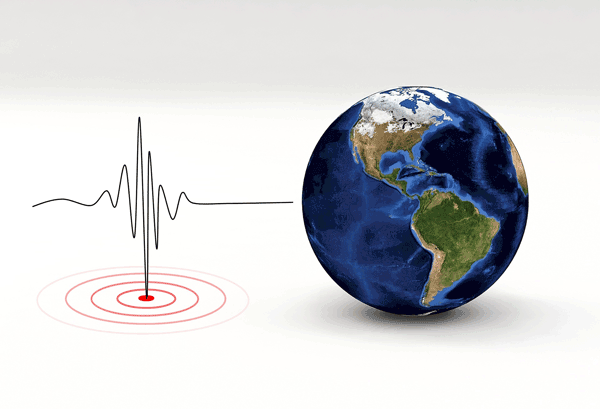You are here
Scientific community implores public to ignore false earthquake warnings
By Maria Weldali - Feb 28,2023 - Last updated at Feb 28,2023

Representative image (Image courtesy of of pixabay.com)
AMMAN — False or misleading news circulating on social media platforms about earthquake predictions have triggered panic and alarmed a portion of the Jordanian public.
Following the devastating earthquakes that struck southeast Turkey and neighbouring Syria, Jordanians became fixated over analyses concerning new tremors in the region.
“A lot of people are in fear of another earthquake. Some even prepared a handbag near their front doors,” Haifa Khaled, a Jordanian in her 30s, told The Jordan Times.
Public concern ignited after Dutch seismologist Frank Hoogerbeets, who reportedly predicted the earthquakes in Syria and Turkey, alleged that there are more yet to come.
On February 27, Hoogerbeets published his latest YouTube video, in which he warned that “the first week of March is going to be very critical.”
Major seismic activity is going to take place between March 3-4 and/or March 6-7, Hoogerbeets claimed.
Hoogerbeets gained international attention after incorrectly predicting that a catastrophic earthquake measuring between 8.8-9.8 on the Richter scale would strike the west coast of the US in May of 2015, according to Californian Fox News affiliate, Fox-40 news.
Earthquakes are not predictable and therefore, no one can know when and where a future tremor might occur, Head of the Jordan Seismological Observatory, Ghassan Sweidan, told The Jordan Times over the phone.
“There is no such thing as a forecast or warning for earthquakes,” Sweidan affirmed.
“What is certain is that particular areas in the region or the world are prone to seismic activity… People should not believe fake earthquake warnings,” he stressed.
Najib Abu Karaki, a geophysicist at the University of Jordan, told The Jordan Times that “it is impossible to issue an alert for the magnitude or place of an earthquake”.
According to Abu Karaki, seismic risks can be evaluated through active cooperation among professionals, experts and engineers in seismic performance evaluations.
“The most powerful earthquake in Jordanian history was probably the tremor of November 22, 1995,” the geophysicist said, explaining that the Kingdom was hit with a 7.3-magnitude earthquake.
However, this is “a very rare occurrence and happens once in thousands of years,” Abu Karaki said.
The type of tremors most prevalent in the Kingdom, or what are known as “characteristic earthquakes”, are around 6.5-magnitude, he added.
The geophysicist categorically denied Hoogerbeets’s predictions, warning the public not to put their faith in such forecasts.
Related Articles
AMMAN — A new 6.3-magnitude earthquake was registered on Monday, only two weeks after the devastating quakes that hit the Turkish-Syrian bor
AMMAN — The Jordanian Seismological Observatory (JSO), an affiliate of the Ministry of Energy and Mineral Resources, on Wednesday repo
AMMAN — The Jordan Seismological Observatory (JSO) of the Ministry of Energy and Mineral Resources on Saturday announced that it recorded 81
















